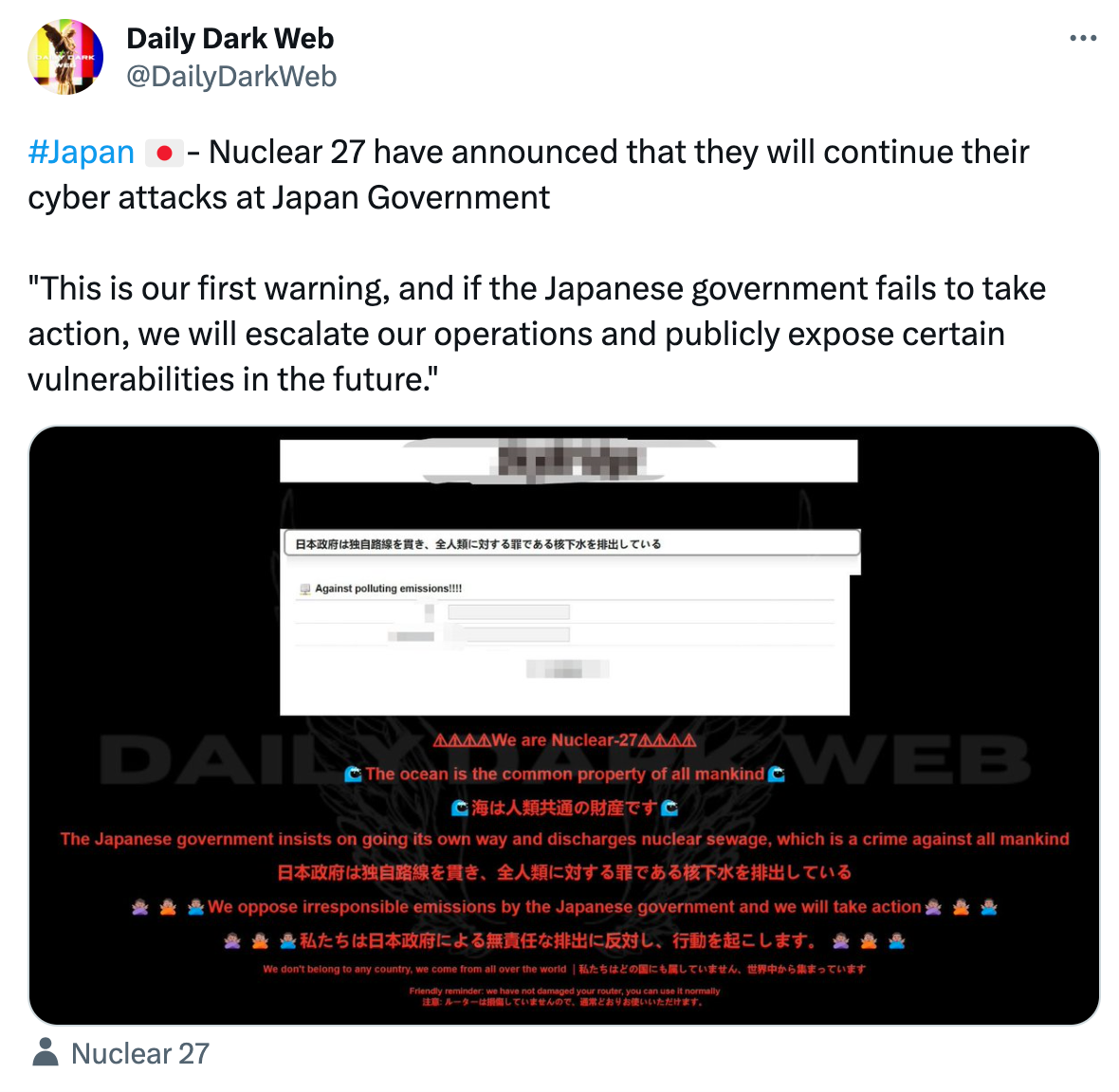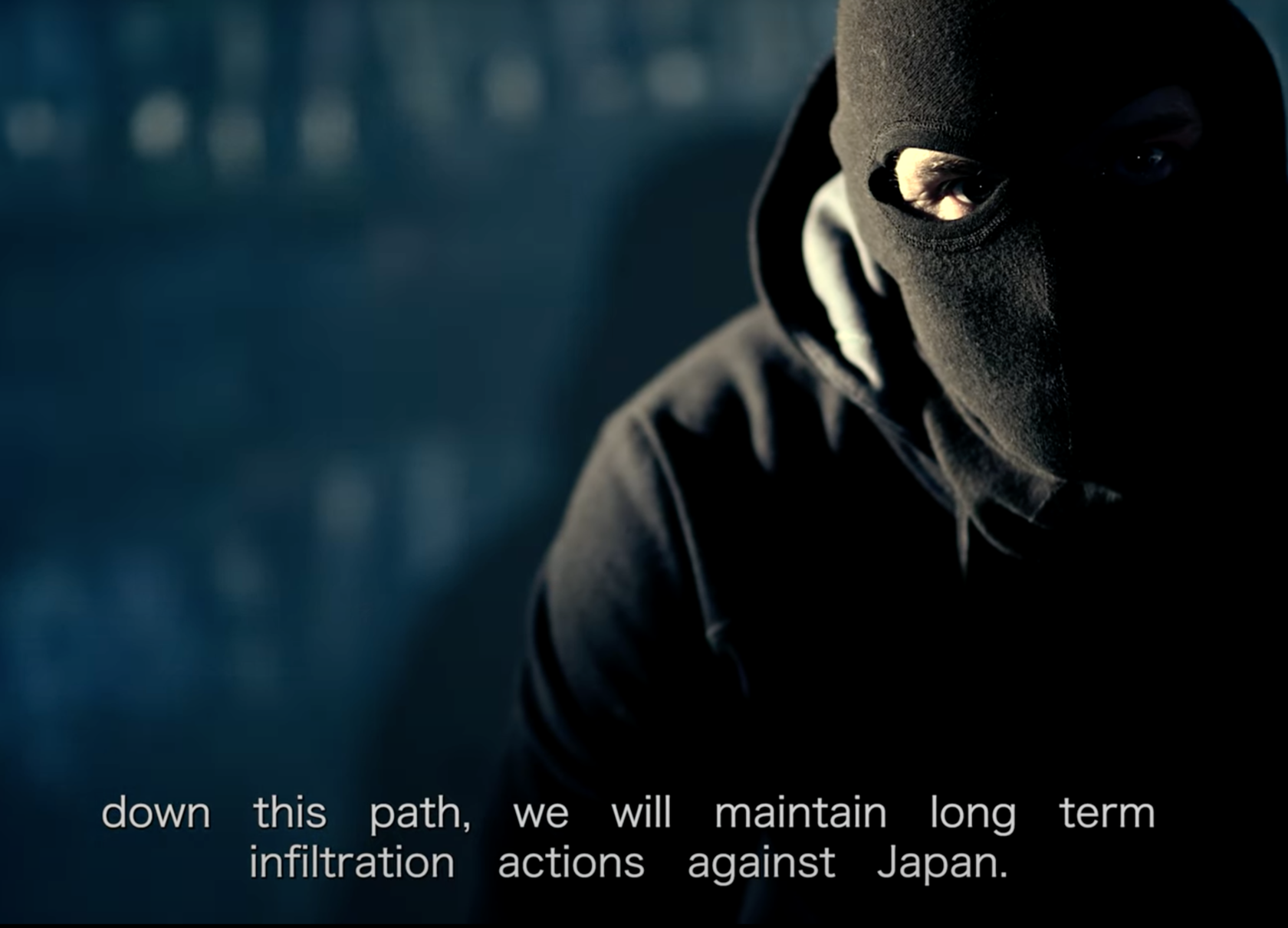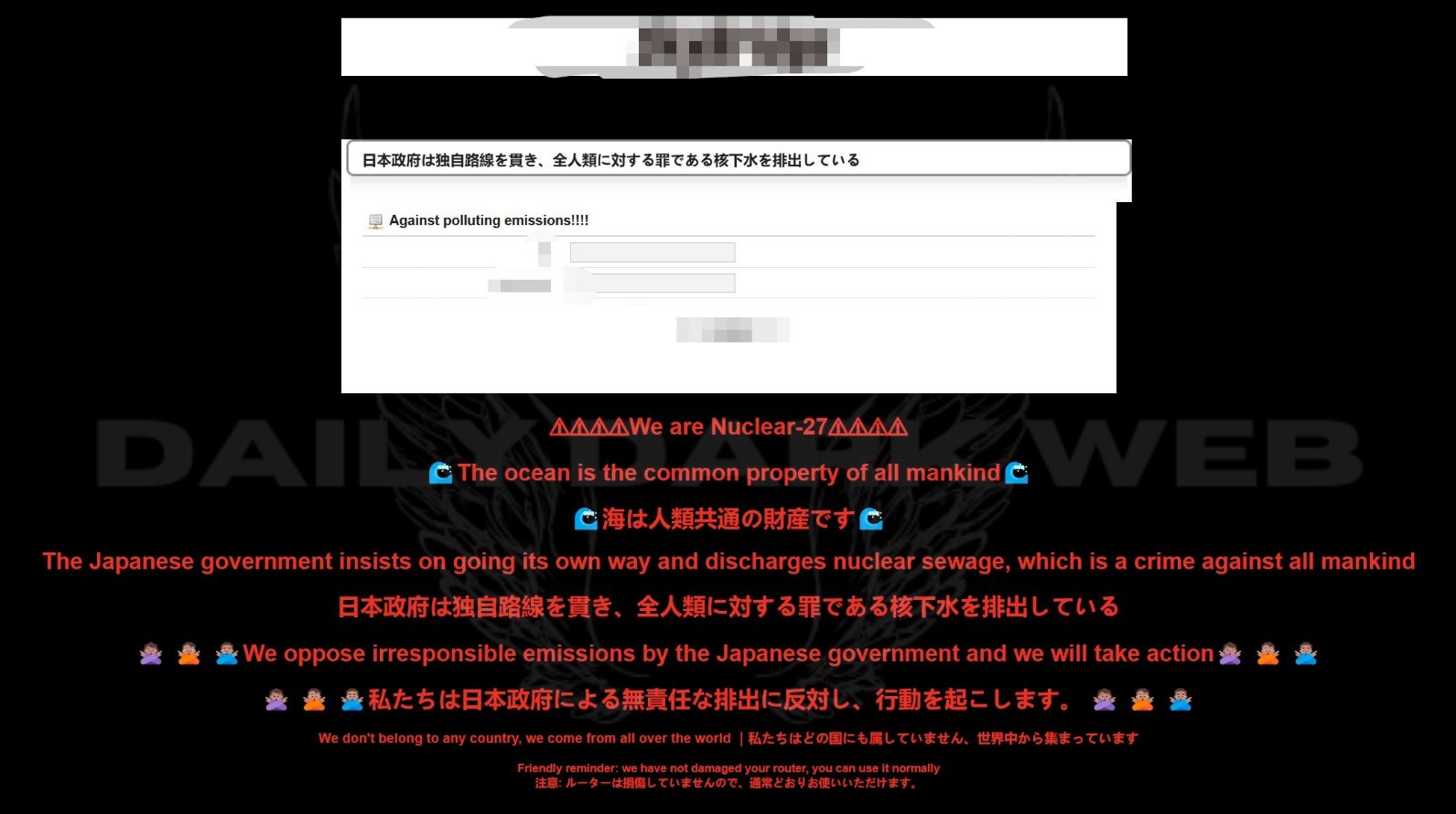[Pipeline Research] Website Defacement by Nuclear27: A Deep Dive into Digital Vandalism
First shared by the DailyDarkweb on X (Formerly known as Twitter), The hacktivist collective, Nuclear27, has recently targeted and issued threats against the Japanese Government via youtube and other social media channels, demanding a halt to the nuclear waste discharge. As cyber threats evolve both in frequency and complexity, website defacement, a long-standing form of cyberattack, has resurfaced in Japan, with Nuclear27 at the forefront.

1. What is Website Defacement?
Website defacement is the act of altering a website's appearance without permission, often done to spread political, religious, or hacktivist messages. It's the digital equivalent of graffiti on a wall. While the motive might vary, the primary aim is usually publicity or to showcase the vulnerability of the website.
2. Who is Nuclear27?
Nuclear27, an emerging hacktivist group, has claimed responsibility for a series of website defacements over the past few months. Although relatively new, their operations demonstrate a seasoned understanding of web application vulnerabilities.
3. The Defacement Incident:
The previous defacement attack by Nuclear27, was a high-profile corporate website that added a message decrying corporate malpractices, accompanied by a logo symbolizing a radioactive atom. The group left a note, highlighting the website's vulnerabilities and chastising the organization for neglecting cybersecurity. In the recent attack against the Japanese government, they have demanded the halt of nuclear waste discharge and have made additional threats via social media channels against the Japanese government, infrastructure, schools, and additional entities which was not clarified in detail.
2. Who is Nuclear27?
Nuclear27, an emerging hacktivist group, has claimed responsibility for a series of website defacements over the past few months. Although relatively new, their operations demonstrate a seasoned understanding of web application vulnerabilities.
3. The Defacement Incident:
The previous defacement attack by Nuclear27, was a high-profile corporate website that added a message decrying corporate malpractices, accompanied by a logo symbolizing a radioactive atom. The group left a note, highlighting the website's vulnerabilities and chastising the organization for neglecting cybersecurity. In the recent attack against the Japanese government, they have demanded the halt of nuclear waste discharge and have made additional threats via social media channels against the Japanese government, infrastructure, schools, and additional entities which was not clarified in detail.

Nuclear27 posts message on Youtube - https://www.youtube.com/watch?v=_1zXEHOYnnY
4. Why Should Organizations be Concerned?
While defacement may seem harmless compared to data breaches or ransomware attacks, it carries significant implications:
- Reputation Damage: The public defacement can erode trust among customers and stakeholders.
- Operational Disruptions: Reverting a website to its original state can take time, especially if backups are not available.
- Gateway to Further Attacks: Defacement can sometimes be the tip of the iceberg. If a hacker can alter a website, they might also access sensitive data or deploy other malicious payloads.
5. How to Protect Your Website:
Given the rising threats, it's essential for organizations to fortify their web assets:
- Regular Updates: Ensure all web applications, CMS systems, and plugins are up-to-date. Outdated software is a prime target for hackers.
- Web Application Firewalls (WAF): These can detect and block malicious web traffic targeting application vulnerabilities.
- Frequent Backups: Always have a recent backup of your website. In case of defacement, it aids in swift restoration.
- Vulnerability Assessment and Penetration Testing (VAPT): Regularly test your web applications for vulnerabilities and fix them proactively.
- Educate & Train: Ensure that employees are educated about the basics of cybersecurity. A well-informed team can act as the first line of defense.
6. Conclusion:
Website defacement, while old-school, still poses a significant threat in today's digital landscape. With groups like Nuclear27 actively showcasing the vulnerabilities of the cyber world, the onus falls on organizations to ensure their digital assets are secure and robust against such attacks.
In the era of digital transformation, cybersecurity is not just a technical requirement but a crucial business imperative. Stay informed, stay updated, and stay safe.
- Reputation Damage: The public defacement can erode trust among customers and stakeholders.
- Operational Disruptions: Reverting a website to its original state can take time, especially if backups are not available.
- Gateway to Further Attacks: Defacement can sometimes be the tip of the iceberg. If a hacker can alter a website, they might also access sensitive data or deploy other malicious payloads.
5. How to Protect Your Website:
Given the rising threats, it's essential for organizations to fortify their web assets:
- Regular Updates: Ensure all web applications, CMS systems, and plugins are up-to-date. Outdated software is a prime target for hackers.
- Web Application Firewalls (WAF): These can detect and block malicious web traffic targeting application vulnerabilities.
- Frequent Backups: Always have a recent backup of your website. In case of defacement, it aids in swift restoration.
- Vulnerability Assessment and Penetration Testing (VAPT): Regularly test your web applications for vulnerabilities and fix them proactively.
- Educate & Train: Ensure that employees are educated about the basics of cybersecurity. A well-informed team can act as the first line of defense.
6. Conclusion:
Website defacement, while old-school, still poses a significant threat in today's digital landscape. With groups like Nuclear27 actively showcasing the vulnerabilities of the cyber world, the onus falls on organizations to ensure their digital assets are secure and robust against such attacks.
In the era of digital transformation, cybersecurity is not just a technical requirement but a crucial business imperative. Stay informed, stay updated, and stay safe.









